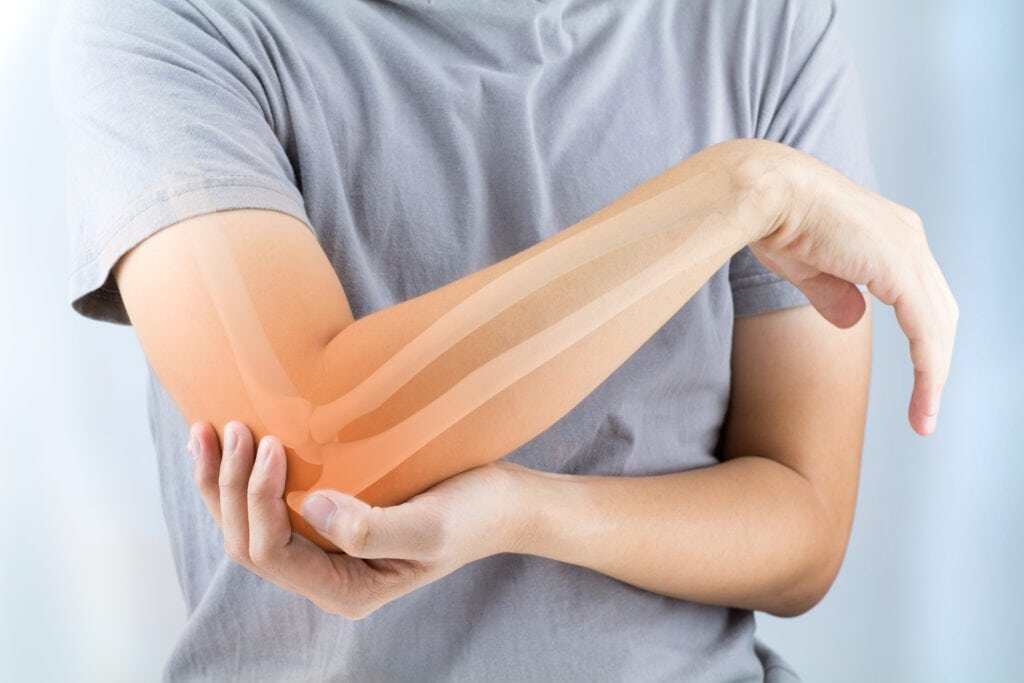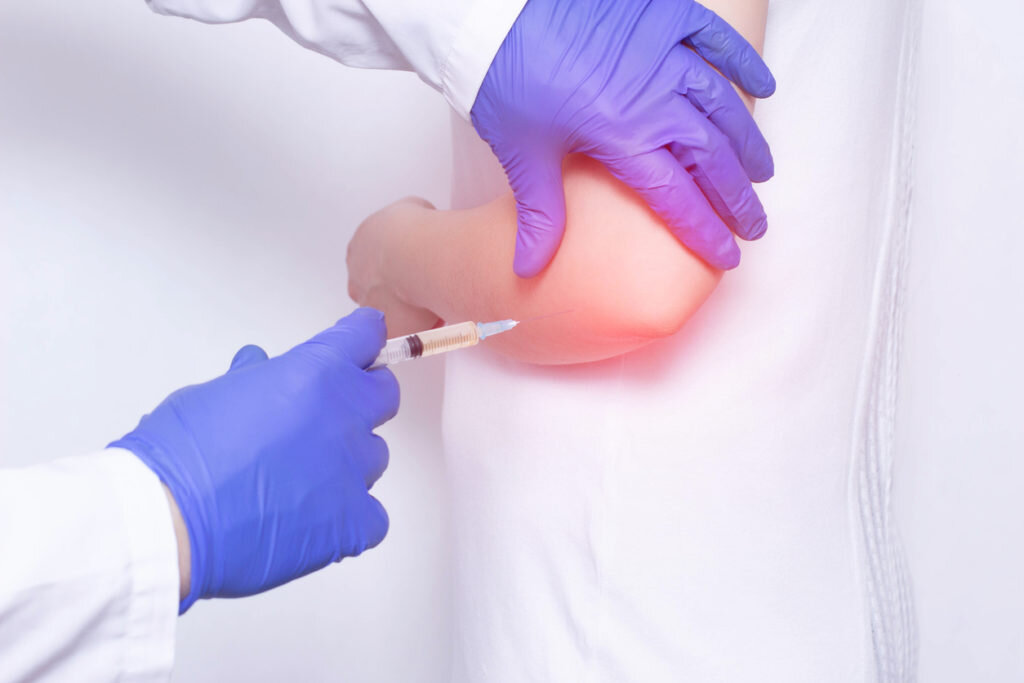Tendonitis (a/k/a Tendinitis)
Tendonitis, also known as tendonitis, is the inflammation of a tendon due to overuse or other causes. Tendonitis can occur when a person overuses or injures a tendon, for example, during sport or repetitive use during work. Tendonitis is sometimes linked to an acute injury that causes inflammation in the affected area. Tendonitis can be occur in the knee, elbow, wrist, fingers, and other parts of the body.
At Aptiva Health, we offer immediate appointments for tendonitis to evaluate, diagnose, and make the appropriate referral for additional treatment based upon the specific area impacted. We treat tendonitis in our General Medicine, Orthopedics, Sports Medicine, and Physical Therapy departments.
Symptoms & Causes
Tendonitis can exhibit an array of symptoms depending on the location on your body. Some of the more common symptoms of tendinitis are as follows:
Swelling, sometimes with redness or heat at the site of the swelling
Pain in the tendon area that gets worse with activity or movement
Difficulty moving the affected joint
Cracking or grating sensation when you move the affected tendon
Tenderness in the area
Tendonitis can sometimes occur with a sudden or acute injury, but is typically linked to repetitive motions or movements over time such as pitching, golfing, weight lifting, etc. Many people develop tendonitis as a result of their work or hobbies that involve the same repetitive movements, which can put stress and cause overuse of tendons.
Diagnosis & Treatment
A complete medical history and physical exam can usually identify any potential conditions that may be causing joint pain. Accurate diagnosis for the source of your pain will require a comprehensive physical examination. In the physical examination, your doctor will likely:
Inspect your affected joint for swelling, pain, tenderness, warmth and visible bruising
Check to see how far you can move your affected joint or extremity in different directions
Push on or pull the joint to evaluate the integrity of the structures in your affected joint
IMAGING TESTS
In some cases, your doctor might suggest tests such as:
X-ray. X-ray is used to help detect bone fractures and degenerative joint disease.
Ultrasound. This technology uses sound waves to produce real-time images of the soft tissue structures within and around your affected joint. Your doctor may want to move your joint into different positions during the ultrasound to check for specific problems.
Magnetic resonance imaging (MRI). An MRI uses radio waves and a powerful magnet to create 3D images of the inside of your knee. This test is particularly useful in revealing injuries to soft tissues such as ligaments, tendons, cartilage and muscles.
Treatment
Step 1: Conservative Treatment Options:
Treatments will vary, depending upon what exactly is causing your joint pain, but at the onset, the majority of patients are instructed to modify any activities that may be contributing to the tendonitis and to rest. Your physician may also prescribe some over the counter medications or other prescriptions to help alleviate symptoms and pain associated with tendonitis.
Medications may include:
Analgesics and NSAIDS
PHYSICAL THERAPY
Strengthening the muscles around your affected joint will make it more stable. Your doctor may recommend physical therapy or different types of strengthening exercises to see if can help alleviate symptoms and pain associated with tendonitis. In addition to passive and active physical therapy treatment modalities, our physical therapists commonly utilize dry needling to help promote the body’s on healing response to treat areas affected by tendonitis.
Step 2: Intermediate Treatment Options:
INJECTION THERAPY
In some cases, your doctor may suggest injecting medications or other substances directly into your joint. Examples include:
Corticosteroids. Injections of a corticosteroid drug into your affected joint may help reduce inflammation and relieve symptoms associated with tendonitis. These injections are not recommended for chronic tendonitis (tendonitis that has lasted more than three months) due to the increased risk that repeat corticosteroid injections can weaken a tendon and increase the propensity to rupture a tendon.
Platelet-rich plasma (PRP). PRP contains a concentration of many different growth factors that appear to reduce inflammation and promote healing. These types of injections tend to work better in people with tendonitis.
Stem cell injections. The cartilage covering the ends of the bones enables the bones to glide smoothly against one another with only slight friction. The goal of stem cell therapy is to use the body’s own healing mechanisms to help repair and slow the deterioration of body tissues, such as cartilage. Research is currently underway to prove the effectiveness of stem cell therapy to treat tendonitis.
Step 3: Surgical Intervention
If your tendonitis has not been relieved with conservative treatment or injective therapy, your Sports Medicine specialist may use one of the following approaches while performing a tendonitis surgery:
Open surgery. In this type of surgery, an incision is made through the skin overlying the affected tendon. The size of the incision varies based on the specific condition and tendon being treated. Open surgery may be considered while treating the tendon along with its surrounding membranes, sheaths, or other structures. Examples of open surgical tendon procedures on the include:
Tendon sheath release or releasing constricting tissue from around a tendon
Tenosynovectomy or releasing a tendon from surrounding inflammatory tissue and removing the inflammatory tissue
Tendon grafting or using a tendon from another body part to restore function
Tendon transfer or moving a tendon to another area for better functionality of the joint
Tendon repair surgery, where a torn tendon is surgically repaired or re-attached to bone
Minimally invasive procedures. These procedures can be performed using needles and small tubes without the need for large incisions. Minimally invasive surgeries for treating tendonitis include:
Arthroscopic surgery. Arthroscopic surgery involves insertion of an arthroscope (small device with a lens and light) into the wrist. The arthroscope is connected to a video screen and monitor, which enables the doctor to view the inner structures and surgically treat the disorder. This technique is useful in debridement (the removal of fibrotic tissues, adhesions, and other tissues).
Tenotomy. A tenotomy is a form of minimally invasive surgery that involves insertion of needles into the joint in order to cut a tendon. The procedure may involve the use of ultrasound or x-ray guidance to guide the needle into the area to be treated.
As with any surgery, complications can occur. Infection, nerve damage, scar tissue formation, and wrist stiffness may result after tendon surgery.







